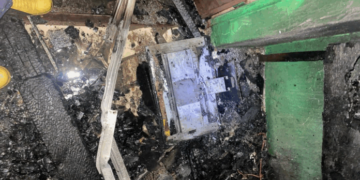
As banks race against time to meet the central bank’s December 31 minimum capital requirement deadline, they are projected to require a total GH¢13billion of fresh capital – a task indigenous banks in particular say is too daunting.
In a paper titled ‘Banks’ Readiness Assessment to meet the 2018 minimum fixed capital requirement of GH¢400 million’, Emmanuel Akrong – a financial analyst and credit consultant states: “Growing NPLs, inappropriate asset quality classification, lack of back-testing collateral values and collateral realisation period used in IAS 39 provisioning process – leading to possible high collateral values and low provision coverage – present additional risks that have to be considered in the capital gap estimation”.
“First, I would say let’s increase the provision coverage to 100%; this means we need GH¢2.58billion (30% of GH¢8.58billion) additional capital and increased NPL stock to account for possible delayed downgrading of non-performing loans by 30%, with 100% provision coverage. These two estimations total an additional GH¢5billion to the initial GH¢8billion estimate, bringing the total capital gap to GH¢13billion.”
The central bank’s December 2017 banking sector report revealed that asset quality remained a key risk, since the industry’s NPL – as at end of December 2017 – amounted to GH¢8.58billion (GH¢6.2billion in December 2016), which translates into an NPL ratio of 22.7 percent in December 2017 from 17.3 percent in December 2016.
“Using the December 2017 condensed financial statements (FS) of 18 banks and 2017 full FS of 4 banks published as at March 31, 2018; Q3 2017 for two banks (GCB and OmniBank); Q2 2017 FS of 1 bank (Sovereign Bank); December 2016 FS of 8 banks (UniBank, Baroda, Royal, Prudential, Energy, BSIC, Premium and GN Bank); and December 2015 financial statements of 1 bank (NIB), my assessment of the minimum capital requirements gap at the end of December 2018 is GH¢12.67billion,” he said.
Mr. Akrong stated that, based on his analysis as at end of March 2018, five banks (Ecobank, Stanbic, GCB, Barclays and Zenith) are the only ones which might not require additional capital to meet the minimum capital requirement for 2018.
Nevertheless, he maintains that it is important not to judge the five banks’ financial soundness using minimum fixed capital requirements alone.
“The minimum fixed capital requirement is not risk-based, so one needs to be careful not to use it blindly. I would be more interested in each of the 5 banks’ risk-based capital ratio – such as capital adequacy ratio and their RWA density measured by risk-weighted assets divided by total assets. In addition, other financial soundness indicators such as liquidity, asset quality, earnings and profitability, management quality and sensitivity to market risk should be considered,” Mr. Akrong said.
Source : thebftonline.com


































